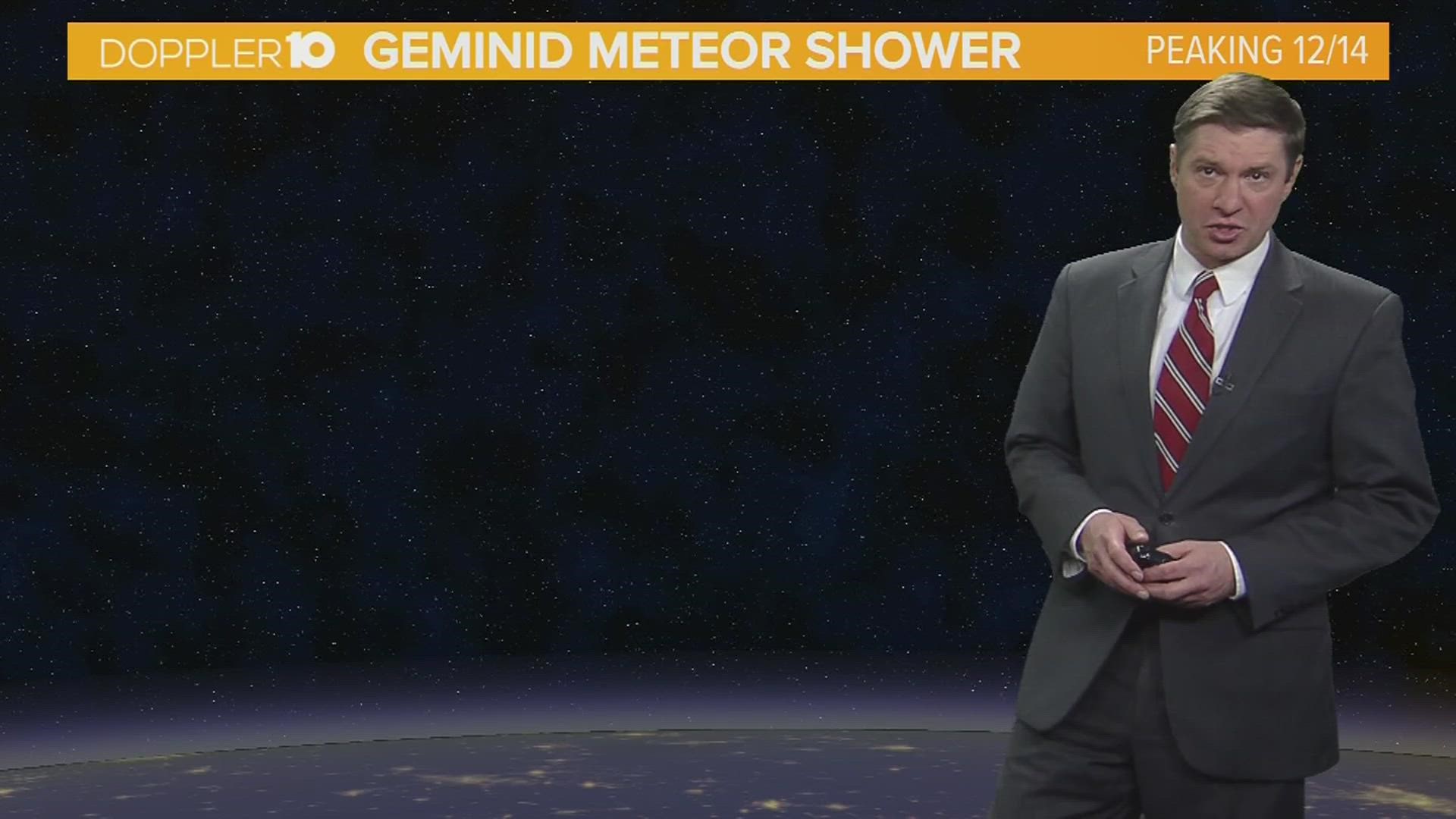Are you ready for one of nature's best shows?
According to NASA, the Geminids are among the "best and most reliable meteor showers," returning every December. The shower is already active in 2021, but it will peak Monday night into Tuesday morning (Dec. 13-14).
“Rich in green-colored fireballs, the Geminids are the only shower I will brave cold December nights to see,” Meteoroid Environment Office lead Bill Cooke said on NASA's website.
Where can you watch the Geminids?
NASA says you can watch the Geminids around the world, especially in the Northern Hemisphere. It's also ideal for younger astronomy lovers since you can start viewing it around 9 to 10 p.m.
However, you'll get the best view of the Geminids during the night and pre-dawn hours. EarthSky.org recommends watching after the moon sets at about 2 a.m. local time until dawn. That's because the light from the moon can make it hard to see meteors -- and the moon Monday night will be close to full.
For the best chance at seeing the meteors, go somewhere away from city lights with a clear view of the sky. EarthSky.org recommends watching for an hour or more since your eyes will take a while to get used to the dark. And keep in mind, these meteors will often come in groups with lulls in between.
It'll be chilly, so NASA recommends grabbing a lawn chair, blankets and even a sleeping bag for the comfiest experience.
Can you stream the Geminids?
Not braving the December night? NASA plans to livestream the shower using a meteor camera at NASA’s Marshall Space Flight Center in Huntsville, Alabama -- weather permitting.
The stream will start at 8 p.m. CST on the NASA Meteor Watch Facebook page.
Where do the Geminids come from?
Most meteor showers come from icy, dusty comets, but the Geminids originate from a rocky asteroid: 3200 Phaethon, named after the Greek mythological figure who drove the sun god's chariot.
But... there's a twist. NASA says Phaethon might not actually be an asteroid! Instead, it could be a "dead comet" or a "rock comet" -- an asteroid that gets so close to the sun that the heat scorches off dusty pieces.
The Geminids have an air of mystery to them, but they're still one of the most popular astronomical events of the year. They've been around for quite a while, too. NASA says the first Geminid showers were spotted in the 1800s, but they weren't as showy -- only 10 to 20 meteors seen per hour.
That's a far cry from today's Geminids. NASA says in perfect conditions during the shower's peak, you can see 120 Geminid meteors per hour.
The video below is from December 2020.

